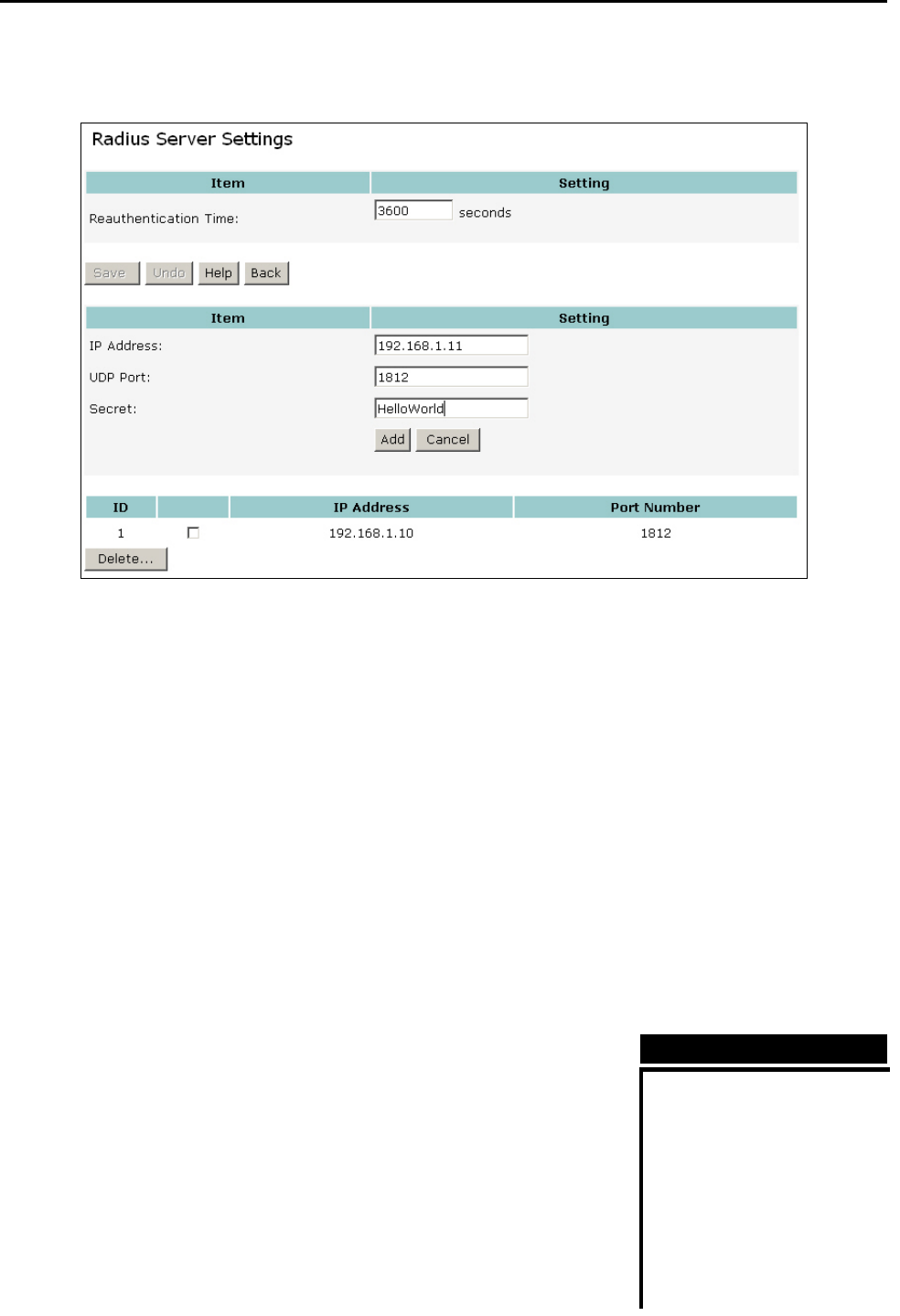
CONNECT2AIR™ WLAN AP-600RP-USB Page 40 / 62
8.4.13 Radius Server
RADIUS (Remote Authentication Dial-In User Service) plays a central role in the network
in providing the capabilities of authenticating, authorizing, accounting, auditing and alarm-
ing, etc. and allows an organization to maintain user profiles in a central database that all
remote servers can share. Since RADIUS is relatively complex to explain, we will focus
here on how it acts as an 802.1x authentication server (EAP-aware RADIUS) and assists
in enhancing security.
RADIUS performs the authentication function required to check the credentials of users
and intermediate AccessPoints and indicates whether the users are authorized to access
the AccessPoints. Enabling RADIUS is therefore the first step toward building up an
802.1x-capable environment. Even more, it is also a must-do to accommodate the recently
introduced Wi-Fi Protected Access™ (WPA-EAP) to wireless networks.
Setting up RADIUS information in your AccessPoint is quite simple; just input the relevant
IP address for RADIUS and the port number, which is usually set to 1812, as well as the
secret key, which is identified with the given key in RADIUS. Æ Press Add to apply the set-
tings.
When you finish adding RADIUS information, return to the
Wireless Security Settings page, where you will be allowed to
continue configuring 802.1x as the picture shows. You can
choose here to have either 802.1x with static WEP or with dy-
namic WEP and WPA-EAP to ensure even greater security in
your wireless network.
802.1x and Radius Server:
An 802.1x client needs to be
combined with a Radius server.
The server acts as an authenti-
cation authority, the Access-
Point as an authenticator and
the client as supplicant.
Windows XP already comes
with integrated 802.1x capabili-
ties and can therefore be used
directly in combination with a
Radius server
A
PPLICATION


















